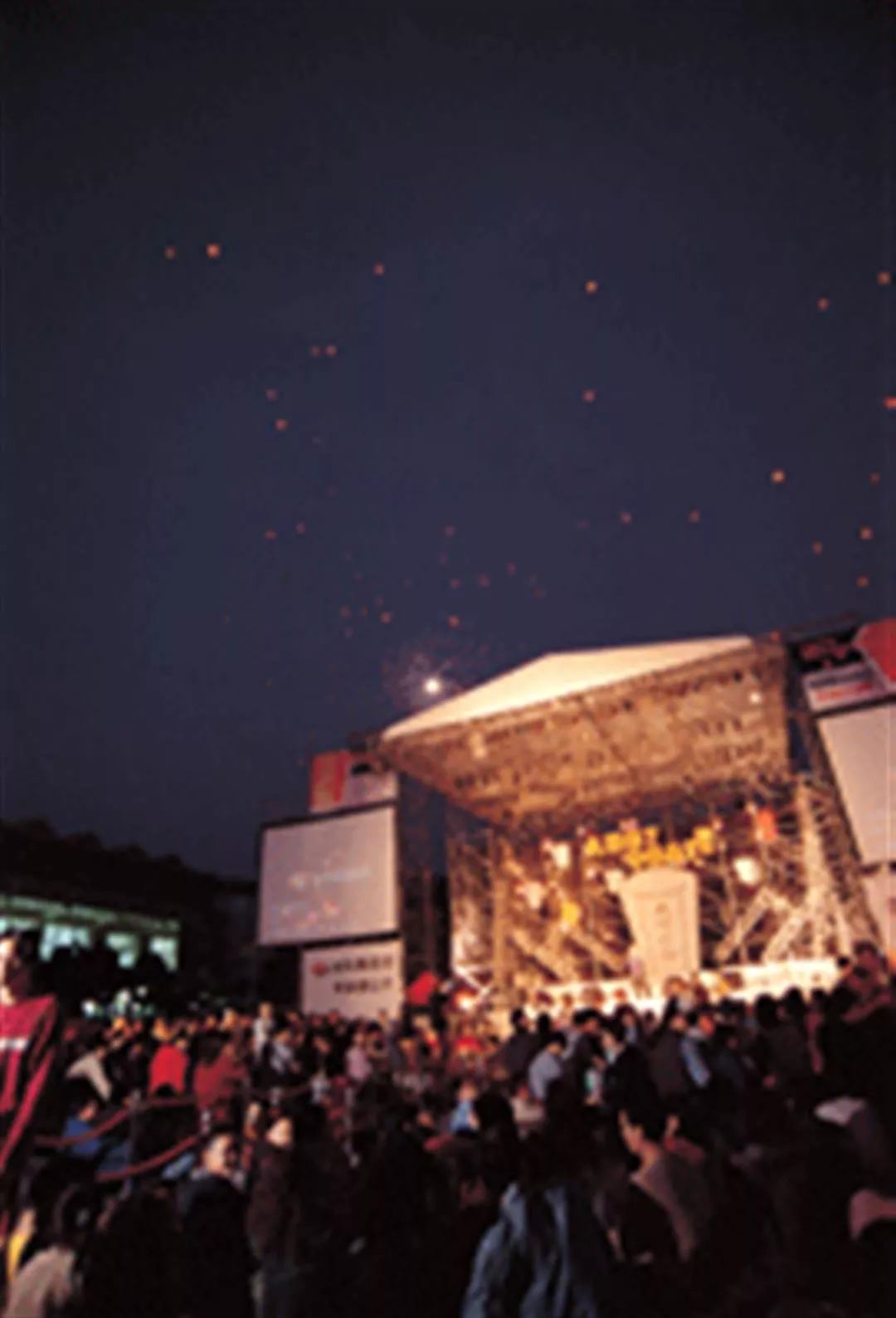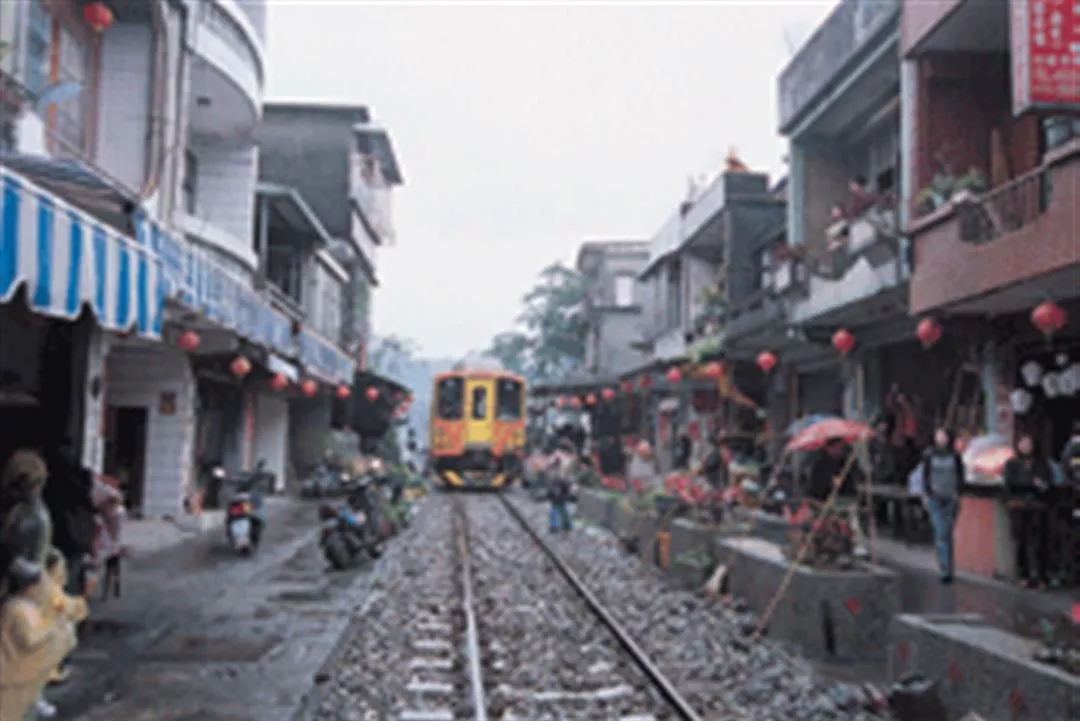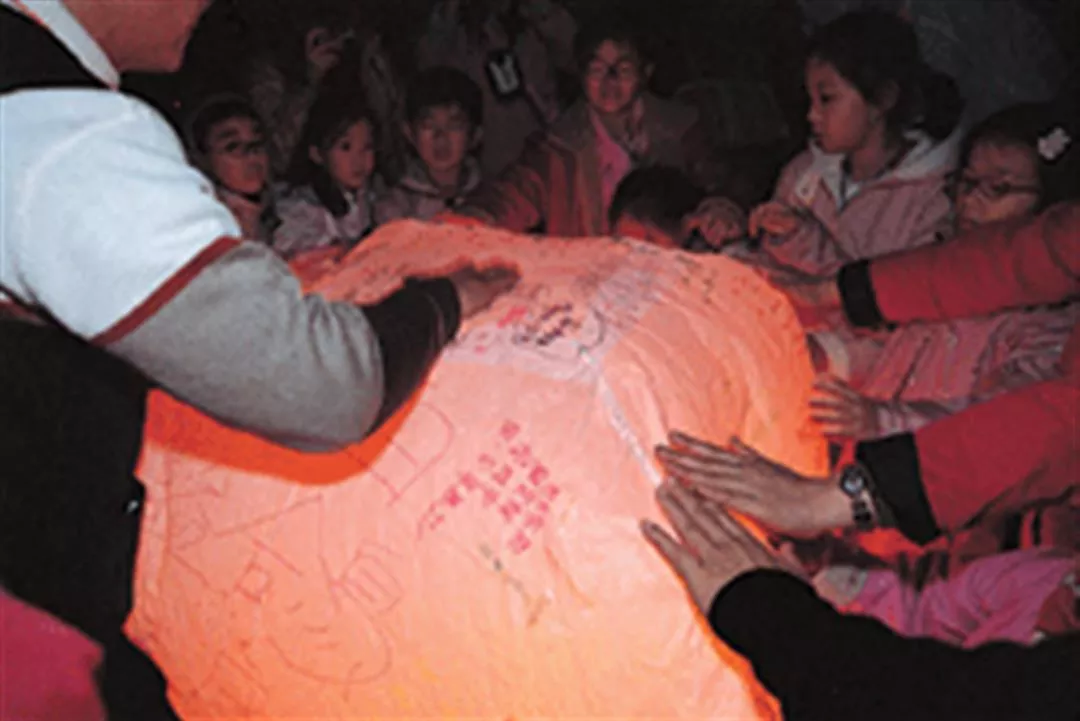A folk custom goes big time
In recent years, with growing understanding about the importance of cultural industries, localities and government agencies have begun to look toward cultural activities and folk festivals as a means both to put a place on the map and to bring in money. Certain local festivals have been put on in an ever-grander manner so that they have become major celebrations for the whole nation, or even indexes of Taiwan's cosmopolitanism. Among this group of festivals are Ilan's Children's Folklore and Folk Game Festival, Meinung's Yellow Butterfly Festival, Sanyi's Wood Carving Festival, and of course Yenshui's Fireworks Festival and Pinghsi's Sky Lantern Festival.
By packing in the crowds, the festivals do more than bring in waves of people and money. For example, Pinghsi, which has a resident population of only 5,000, has several hundred thousand tourists arrive for the festival. With the resulting business opportunities, some of the young people who had left the village return, and Shihfen's sleepy old streets come to life again. In one restaurant near the Shihfen Train Station, more than ten members of the owner's extended family came home this Lantern Festival to wait tables. It's practically the whole clan. Of the shops and stalls that sell sky lanterns during the Lantern Festival, those with the best locations can make as much as NT$300,000, and even the worst performers pull in NT$50,000. For Pinghsi Rural Township, where the streets are usually empty, the Lantern Festival represents a once-in-a-year chance to make good money. Whether they're selling sky lanterns or preparing food, the locals don't seem to object to the three days of special traffic restrictions, because, as one stall owner puts it, "The more people come, the more money comes."
With regard to these locals who are cashing in on the town's one moment in the spotlight, cultural critic Chen Pan offers a different take. "There's nothing wrong with a carnival-like atmosphere," Chen says, "but if the locality isn't well enough prepared or is too eager to attract crowds and cash, it can end up consuming its own moment." The cultural industry shouldn't just be about business opportunities.
Chen holds that Pinghsi Rural Township, without any kind of community organization or rules, is unprepared for the scale of its Sky Lantern Festival. It is powerless to stop people coming from the outside to open up stalls. And apart from not offering any special local delicacies, the restaurants and food stalls simply offer poor quality food. "The Sky Lantern Festival ought to be more deeply tied to the locality," says Chen. "The area ought to reconsider what makes it special, and confidently use the festival as a means to engage in a dialogue with the outside world."
After the festival, skeletons of sky lanterns are littered everywhere in Pinghsi-in the trees, along the riverbanks, in the fields, and on the railway tracks. Some of those who live near the launching area spend all night with bamboo staffs in their hands, ready to prevent errant lanterns from causing fires.
This year marked a special innovation for Pinghsi's Sky Lantern Festival, as Western Valentine's Day fell between the Lord of Heaven celebration on the ninth day of the first lunar month and the traditional Lantern Festival on the fifteenth. Pinghsi expanded its Sky Lantern Festival into a carnival embracing all three. From February 8 to February 15, the Taipei County Tourism Association offered in-depth Sky Lantern Travel Tours. Visitors were brought in on the train, shown outstanding examples of local architecture such as the Taitzu Hotel, and taken to the old Chingtung Coal Processing plant, Shihfen's "Old Street" and the Taiwan Coal Industry Museum. They were also, of course, given an introduction to the manufacture of sky lanterns. The idea was to use the Sky Lantern Festival to lead people to discover Pinghsi's natural and cultural beauty.
On February 8, on the eve of the lunar calendar's Lord of Heaven celebration, the high-pitched blasts of the trumpet-like suona and the low-pitched clangs of the gongs broke the silence of the night, with Pinghsi's Nanchi Community beiguan music troupe and its Fuhsing Community gong and drum troupe kicking off the introduction to Pinghsi's 2003 Sky Lantern Festival. President Chen Shui-bian specially came to release a sky lantern upon which was written his wish for a more clement meteorological and political climate: "More rain, less saliva." At 11:00 p.m., everyone set off firecrackers to celebrate the Lord of Heaven's birthday. Some visitors who had made the pilgrimage from Keelung and Taipei simultaneously released some 200 sky lanterns.
Sunday the 15th was the traditional Chinese Lantern Festival, following immediately Western Valentine's Day on Saturday the 14th. On Valentine's Day, apart from launching sky lanterns in the traditional white, celebrants also released some pink lanterns representing joy and yellow lanterns representing passion, which made the scene of lanterns in the sky just that much sweeter and more colorful. In an especially touching moment, one suitor launched his wedding proposal on a 3.6-meter sky lantern. His girlfriend then demurely conveyed her consent on another.
Unlike traditional Lantern Festival celebrations, the Sky Lantern Festival in Pinghsi put young people front and center this year. Liang Ching-ju, Li Wei, Wan Fang, Li Hsin-liang, Kuang Liang and other young pop stars performed, sending basslines blasting skyward to join the lanterns.
"When the sky lanterns themselves only account for 5% of an NT$6 million budget, I think the organizers are leaning in the wrong direction," says Hu Min-shih. Adding singing and dancing may make the celebration more festive, but Hu wishes that the responsible county agencies would spend more on the actual construction and release of sky lanterns, since they are after all the true leading lights of the festival.
"On a winter night in the mountains, a thousand lamps rise. . . ." When many hundreds of sky lanterns rise heavenward amid the mountains of Pingshi, the beautiful and peaceful scene naturally kindles great hopes for the new year. For the sponsoring county government and the citizens of Pinghsi, the sky lanterns must be conveying something more than just prayers for greater crowds and a larger revenue stream.

The big pop concerts really pump up the excitement level for young people. But as the number of activities grows, each may lose some of its individual ability to move people. By acquiring a carnival atmosphere, is the Sky Lantern Festival gradually drifting away from its original mood of peace and tranquility? (photo by Tsai Si)

With the arrival of the Sky Lantern Festival, people throng aboard the Pinghsi Line to join in the merry-making and to catch a glimpse of Pinghsi's natural and cultural beauty. (photo by Chi Yueh)

People of all ages come out to piously inscribe their wishes for the new year on the sky lanterns. (photo by Chi Yueh)